Many hospitals and or birth centers have certain days or evenings when they give tours of the labor, delivery, and post partum areas. It’s ideal to do your tour between your 32nd and 34th weeks. Walking is easier and more comfortable before you get too big. If you do your tour too soon, you may forget a few details.
I hope these tour topics help your tour time to be the most effective. Ideally they may stimulate you to think of more personal questions as you progress towards your delivery.
There are five basic categories of questions
- Arriving at the hospital
- Arriving at the birth center
- Labor
- Delivery
- After delivery
Arriving at the hospital
Where do we park? In larger hospitals it can be quite a maze trying to find the best place to park when you are actually in labor. You don’t want to end up in some parking structure that empties you out in some unknown part of the hospital…far away from the birth center. Some facilities have “valet parking” for labor patients, or even special parking slots. Double check if there are certain entrance doors that might be only open during normal business hours. Your birth center tour leader can give you the best parking arrangements.
Should I go to the emergency room or directly to the Birth Center? If you are over 20 weeks pregnant and are not having an “emergency” situation (car accident, broken bone, asthma attack, etc), you should always go to the Labor and Delivery area of the hospital’s birth center. This is where the pregnancy experts are located. The ER team doesn’t necessarily have the expertise found in the birth center area. Most birth centers have a triage area where the nurses/doctors decide what your labor status may be.
Should I walk or take a wheelchair? In most cases it is perfectly fine for you to walk from your car into the birth center. However, if your bag of water has broken (and you’re leaking down your leg), you have high blood pressure concerns, you are in too much pain, or it doesn’t seem safe, take a wheelchair. Ask your tour leader about their particular hospitals guidelines. Also ask where the wheelchairs are located if you need one.
Arriving at the Birth Center
Where do I go? If you are coming for a labor check, the birth center’s triage area should be your destination. Consider this as a “mini ER” just for pregnant patients.
Who checks me and calls my delivering provider? Once you have arrived in the triage area, the nursing staff will usually ask you a bunch of questions (take a history). A nurse will also check you on the inside to see if your bag of water has broken or if you are dilating. Depending on your provider’s preferences, your nurse will generally call your provider and relay the details of your particular labor situation. Based on that communication, your provider will either “come in” or give some instructions (orders) regarding the next step in your care. Your provider may have you call them directly before you come to be checked. This is an individual preference.
Who decides if I am in labor? Most of the time, deciding if someone is in labor is a combination of decisions. It is usually based on the frequency and intensity of contractions and/or determining if your bag of water has broken, and if you are dilating. Every provider has their own “favorite” formula. If your provider relies on the nursing staff for getting this information, the nurses (in a sense) make this shared decision with your provider. If your provider is in the birth center, they will usually make this decision.
How do my prenatal records get from my provider’s office to the birth center? Your prenatal record keeps track of your entire pregnancy. Ideally this information is available for the delivery staff during your labor. For years this communication of information has been a huge challenge, especially with “paper” health records. If your provider uses a computerized or electronic health record, your prenatal records might be “interfaced” with the birth center’s computer system. If there isn’t an interface, or your provider uses paper charts, your records will need to be faxed or “hand carried” to the birth center. You can see the challenges….When do the records arrive? Where are they stored? What about the most recent lab tests? So, in addition to asking the birth center this question, ask your provider.
Labor
Who do I give my birth plan to? Ideally you have reviewed your birth plan with your provider. If all are in agreement, give and review your birth plan again with the nurse who will be with you during your labor. Make sure your support person knows your wishes. If there is a change of nursing staff, make sure your new nurse also knows “the plan”.
Can I eat or drink anything when I’m in labor? When you are home having early labor pains, keep eating and drinking liquids. This helps maintain a good level of energy. When you get into actual hard labor and have been admitted to the birth center, there are usually policies about what you can eat and drink. Ask about this. Many places have a special diet just for laboring women. This usually includes tea, clear juice, broth, popsicles, or flavored gelatin.
Will I need an intravenous (IV) line? Some birth centers have a policy of having an IV access (needle in vein but not attached to fluid). Some centers don’t. Make sure you ask this so you won’t have any surprises.
Will I be attached to monitors? The fetal monitor provides a way of assuring your baby is tolerating labor. In an uncomplicated pregnancy/labor and in a woman who has not had pain medications or an epidural, it is common to have “intermittent” monitoring. There are situations that advise “continuous” monitoring. Ask about your birth center’s policies and your provider’s policies.
How many visitors may I have in my labor room? There usually aren’t restrictions on numbers of people allowed in a labor room. However it is obviously limited by space and, most importantly, the laboring mom’s desires. If you have certain people who “must” be there, make sure you check with the birth center’s policies and how much space there actually is. Make sure your potential visitors also understand.
Can my family/friends spend the night? Again, it does depend on the size of your labor room and if there is a couch to rest on. On your tour, ask to see a labor room so you can see what is available.
Will I have the same nurse for my whole labor? Labor nurses tend to work 12-hour shifts. If you arrive at the beginning of a shift, there is a good chance you will have the same nurse. Otherwise, you may have two happy nurses cover your labor and delivery. If your labor lasts more than 12 hours, you too will have different nurses as their shifts change and new nurses come on. In some situations you may see the same nurse the next day…that’s a long labor.
What are my choices for pain control during labor? It is Important to know what your options are and when to ask for pain medications. Epidural pain management is provided by a provider in the anesthesia department. IV pain medication is ordered by your provider and given by the nursing staff. Be aware of what services are available at your birth center.
How do my friends and family contact me? Cell phones usually work just fine in a birth center, or you might also have a direct phone into your room. If you need to block the phone (don’t want too many calls) let the nursing staff know.
Is there a place for my family/friends to eat while I’m in labor? Be aware that not all birth centers have 24-hour food service for non-patients. Pack a cooler of snacks and food for your major support people so they can keep their energy up for you.
Delivery
Can we take photos or videos during my delivery? Most birth centers allow digital photos to be taken. Some places do not allow videos of the actual birth. Make sure you ask.
Will I need an episiotomy? This is one of those things that no one can really answer until the actual birth. Routine episiotomies are usually a thing of the past. Talk with your provider and get a feeling for their use of this procedure. This is not a hospital policy.
Who will cut the baby’s umbilical cord? If you want someone other than your provider to cut the umbilical cord, please ask the nurse caring for you. This can usually be arranged if the delivery is routine and someone has asked.
Can I hold my baby or breast-feed right away? This should be the goal of any/all birth centers. As your labor progresses, talk with the nurse caring for you so she knows your exact goals for those first important minutes. This is not usually a hospital policy, but rather a shared decision with you and your providers.
When do they take the baby’s footprints? If all is well, this is usually done sometime during the 1st hour after delivery. Bring your baby book with so the staff can also “stamp” the little foot prints into it.
What happens to the placenta? The placenta is usually checked shortly after it comes out (1-20 minutes after delivery). The provider makes sure it is “intact” (no pieces left inside). Unless you have made other plans, it is discarded.
Does the birth center do umbilical cord blood banking? If you plan to use a private cord blood company or you plan to donate your baby’s cord blood, there are several steps involved. First step is to make sure the birth center has the expertise and experience collecting the samples. Don’t wait until the last minute to figure the details. The birth center’s blood bank can offer additional information.
If I need a C-section, can my family come to the operating room? If the C-section is considered an “emergency” (life or death of mom or baby), usually there isn’t time to get a family member ready for the surgery room. If the C-section is for a non-emergency reason, you can expect that one family member can be prepared (scrub clothing, hand washing, and briefing) for coming with you.
After Delivery
Where will I go after I deliver my baby? Some birth centers have LDR (Labor, Delivery, Recovery) rooms and others have LDRP (Labor, Delivery, Recovery, Postpartum) rooms. With an LDR, you usually stay about 1-2 hours after the delivery and are then transported (typically in a wheelchair) to another part of the center where you will spend the rest of your stay with your baby. With an LDRP, you stay in the same room until you go home. What is the arrangement at your birth center…be sure to ask.
Where does the baby go after delivery? If all is well, your baby is most happy with his/her mother. At some point the baby will go to the nursery to get warm, bathed, and checked by the pediatrician. The amount of time spent before going to the nursery varies with every birth center. Don’t forget to ask.
When will I go home? If you had a vaginal delivery and if it is your first baby, usually you stay about 48 hours after delivery. If it is your second baby, and there are no other “issues”, you may ask to go home at 24 hours or so. If you had a C-section, you will probably stay about 72 hours (3 days).
Hopefully this list has been helpful and you get the answers you need. Labor and delivery is full of surprises. With this list you will have some surprises eliminated.
The author of The Pregnancy Power Workbook, Nurse Practitioner Camilla Bicknell called upon her 30-years of experience caring for women who are pregnant to co-write The Pregnancy Power Workbook. Her career is dedicated to the most underserved and she continues to provide prenatal and gynecology care at a large community health center in Colorado Springs, CO. Camilla is also the proud recipient of The Navy Nurse Corps Association’s 2012 Professional Nursing Award.
Image 1: abarefoot

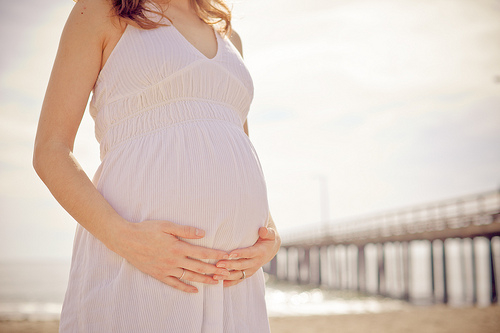
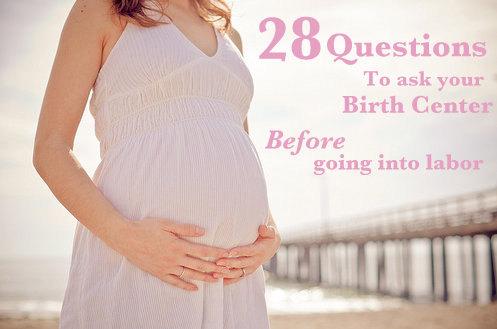
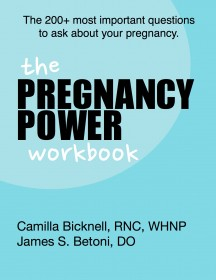

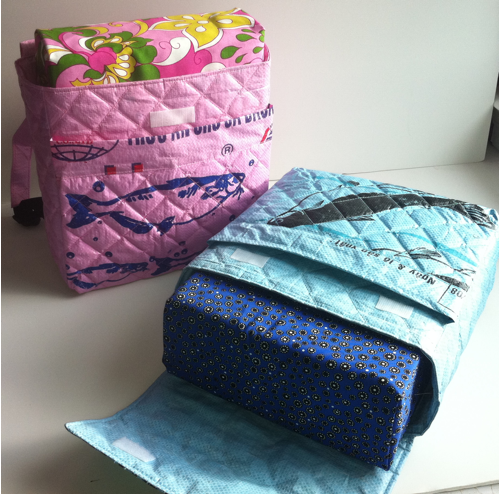

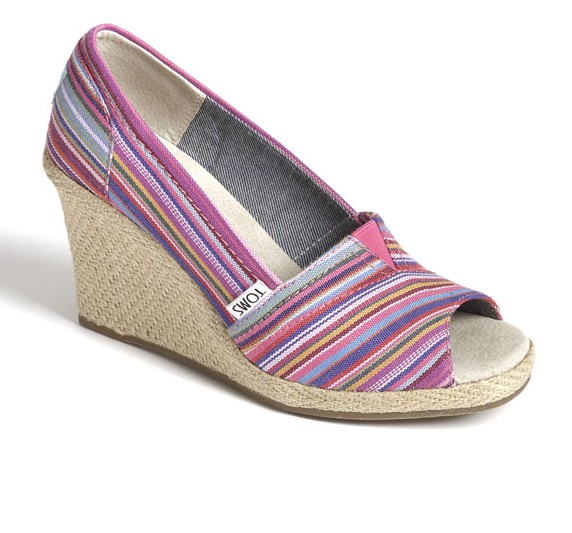


Comments
You should also ask if they will take your baby’s pulseox to test for congential heart defects (CHD). Not all hospitals do it, it costs under $10.
It’s a simple non invasive test that measures the oxygen in the baby’s blood to make sure they don’t have a CHD which is the number 1 birth defect, causes the most fatalities, and if often not diagnosed because it isn’t routinely tested for.
Thanks Will, Make that 29 things to ask your Birth Center! Appreciate you leaving that comment here. – Andrea